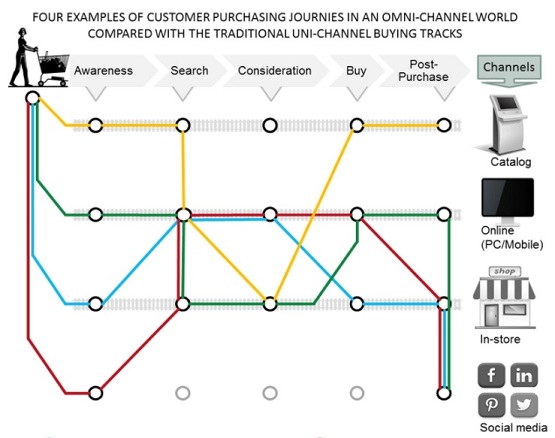How are E-Retail KPIs different from traditional Retail KPIs?
What is E-Retail KPI?
E-retail is the online website of a retail store. KPI means Key Performance Indicators. So, the key performance indicators for an online website of a retail store are e-retail KPIs.
Traditional retail is a physical brick-and-mortar retail store. Let’s call their KPIs, traditional retail KPIs.
E-retail and traditional retail by their nature are different. The difference exists from two perspectives: the customer perspective and the retailer perspective.
Let us see the customer’s perspective first.
The customer perspective drives their shopping preferences and buying behaviour. For instance, customers who value convenience, price comparison, time-saving, and the ability to shop 24×7 prefer to shop online. Whereas, customers who want to touch, feel, and try the product first tend to shop in physical stores.
Increasingly, customers are buying in an Omnichannel environment. Omnichannel means all channels work seamlessly as one. That is, they discover a product in one channel, check it out in another one, and buy through a third. Such as shown in the figure below.

Now, the retailer perspective.
The retailer’s perspective influences their business operating behaviour. Traditional retailers focus on maximizing the in-store experience for their customers while optimizing store space. While e-retailers focus on the online shopping experience and user personalization.
These two perspectives influence their KPIs.
How E-Retail KPIs Differ?
Many e-retail KPIs are common with traditional KPIs. Some of these are the various financial ratios, customer retention, and conversion rate. However, e-retail KPIs are different from traditional retail KPIs in two major areas:
- Customer Acquisition Channels
- Customer Shopping Behaviour
Let us see how.
Customer Acquisition Channels
This is the source of customer traffic to your business. Understanding where your customers are coming from is extremely important for business growth.
E-retail channels are primarily organic search, direct search, referral, e-mails, and social media. These channels actually lead customers to e-retail stores (i.e. the website). So, e-retailers can easily measure the percent of customers acquired from these channels. They can then devise their deliberate strategy around these insights.
For example, Facebook generates 13.9% of e-retail website traffic, but actual sale happens in only 4.7% of cases. This is a critical piece of information in two ways: First, it allows you to allocate resources efficiently. Also, it improves ROI.
Traditional retail channels are different.
They are mainly word of mouth or advertisements in print, television, radio, and social media. For traditional retailers, it is nearly impossible to accurately calculate the percent of customers acquired from these different channels. This is because these channels do not ‘redirect’ them to the store.
For example, a customer actually visiting a store may have seen an ad or may have been referred by word of mouth. But, they may not even remember this information when they visit the store.
Customer Shopping Behaviour
Customer behaviour varies a lot between in-store purchases and online purchases. Understanding customer behaviour is central to acquiring more customers.
In e-retail, KPIs like Shopping Cart Abandonment (SCA) and Customer Lifetime Value (CLV) are important and helpful. The analysis of the shopping cart abandonment rate and the list of discarded items can help improve our understanding of the purchase intent of customers. Similarly, understanding a customer’s lifetime value helps in targeting profitable customers more effectively.
Whereas for traditional retail, understanding shopping behaviour for every customer is tricky and costly. We can only perform market basket analysis. This will only analyze the products added together in the cart. But there is no definite way to measure discarded items from carts in the physical stores. Moreover, physical space-oriented KPIs like sales per square foot are not relevant to e-retail.
In a nutshell, it is essential for retailers to rethink the right KPIs while taking the retail business online. This is especially true since omnichannel shopping is becoming the norm.
Related Posts:
- GYJD: Belief Reinforced
- e-Retail Innovations – How e-Retail is Changing?
- Product Differentiation: Why it isn’t enough anymore
<– Are you survival-oriented or a growth-oriented executive?
Know customer shopping behaviour KPIs in e-retail? –>
Author: Sumit Patil
You can also subscribe to our blog – Veracles – to receive interesting articles and insights in email. We would love to read your perspectives and comments on that.
Do follow Veravizion on LinkedIn, Twitter or Facebook to receive easy updates.
Cover Photo courtesy: Blue Planet Studio
